Types of diabetes and how to know that you have diabetes type 1

Diabetes type 1
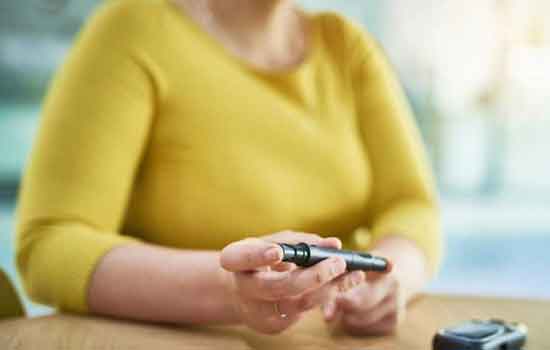
Diabetes is a chronic disease that can lead to severe implications in people of all ages. There are mainly two types of diabetes. It occurs due to a high level of a person’s blood glucose or blood sugar. Blood glucose comes from the foods you eat, and it gives you energy. The actual reason behind the high level of blood glucose is when a person’s body doesn’t make enough or not at all insulin and even when the body doesn’t utilize the created insulin well.
What is Insulin?

Insulin is a hormone which is produced by Pancreas, insulin helps glucose form of food, and this gets into the cells in the body to utilize for gaining energy. If the insulin created by the pancreas doesn’t use by the body and then it stays in the blood. Then insulin doesn’t reach your cells, and it increases the level of glucose in the blood.
Unfortunately, it causes diabetes, and one of the worst things about suffering from Diabetes is that it doesn’t have a cure. But you can control your level of blood glucose by taking some important measures such as:
- Exercise daily
- Cutting sugar from your food
- Control Carbs in your diet
- By adding more fibers to your diet
- Drink plenty of water
- Intake food with a low level of Glycemic Index
- Keep a record of your blood sugar levels
- Eat Chromium and Magnesium-rich foods
Diabetes is a very serious condition, and if the glucose level in your blood reaches too high that it could be very dangerous. That person could lose eyesight permanently, and it could cause the failure of the kidney and damage nerves. It could be the reason for heart problems, strokes, and even a diabetic person could lose their limb.
Types of diabetes
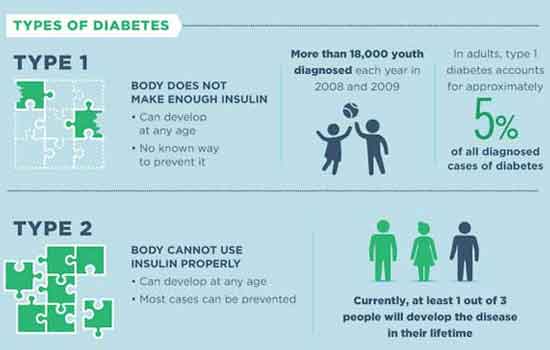
There are mainly two types of diabetes that are Type 1 diabetes and Type 2 diabetes. In Type 1 diabetes, a person’s body doesn’t make insulin at all, and on the other hand, Type 2 diabetes, a person’s body is not able to produce enough insulin and doesn’t use insulin well enough. Type 2 diabetes is also a more common form of diabetes. A person can also be Prediabetes; in this condition, a person may have a high level of blood sugar than the normal level, but it is enough to be labeled as diabetes. On the other hand, a pregnant woman can also suffer from diabetes, known as gestational diabetes. Usually, doctors treat diabetes through medications and insulin.
How to Test various types of Diabetes?
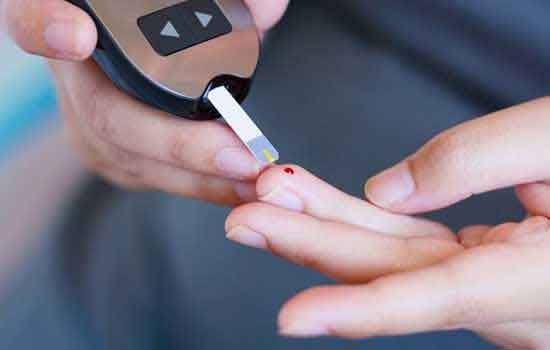
You can check your diabetes through normal blood tests, Fasting blood sugar test, Post-meal blood sugar test, and Oral glucose tolerance test. The doctor may also suggest some screening tests such as the Initial glucose challenge test and Follow-up glucose tolerance test.
Type 1 diabetes: It is a more serious form of diabetes, but it is less common if compare to type 2 diabetes. It generally emerges in children more than adults. Type 1 diabetes or (T1D) normally occurs before the age of 40, but sometimes it occurs to people who are older in age. In India, Type 1 diabetes mostly diagnosed at the age of 12 years.
It is the condition in the human body when the pancreas doesn’t produce insulin, or the body has a deficiency of insulin. The pancreatic islet cells totally halt the production of the insulin hormone which is needed to maintain the level of blood glucose normal and it causes the glucose level of blood to rise high. It causes the condition of hyperglycemia, which is the most common symptom. Cause of Type 1 diabetes:
The actual cause of diabetes is still unknown. It is said that the person’s body, the immune system is weak and not able to fight with the dangerous bacteria’s and viruses. They cause the destruction of insulin-producing cells knows as islets or islets of Langerhans inside the pancreas. The other reason behind having Type 1 diabetes is genetic and facing viruses or also some other factors of the environment.
Family history is also important that if a parent or sibling has any type of diabetes, then a person usually has higher chances of getting the condition. Traveling away from the equator might also be another reason a person could be suffering from T1D. T1D usually happens at the tender ages of 4 and 7 and the second age range in the children is around 10 to 14 years old.
Signs and Symptoms of various types of Diabetes:
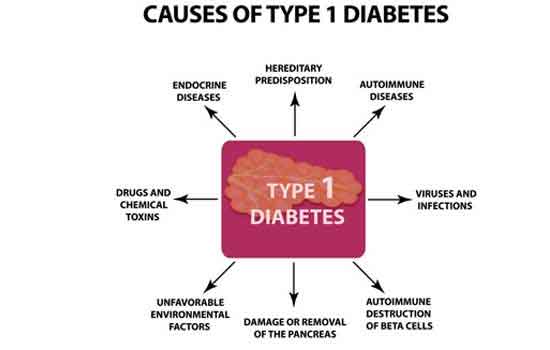
There are different symptoms of the two types of diabetes that have many symptoms, but there are three main symptoms that show that a person has Type 1 diabetes. These are Polyuria, Polydipsia, and Polyphagia. Usually, all these symptoms occur together, but sometimes a person might show one symptom more than other ones at a time.
- Polyuria: In this, a person usually feels to urinate more often than usual.
- Polydipsia: In this, a person feels thirst is enhanced and feel to intake more fluid.
- Polyphagia: In this, the appetite of a person increases.
Some other symptoms that indicate Type 1 Diabetes is as follow:
- In children, they usually wet their beds more than usual.
- Loss of weight (even the appetite is increased)
- Loss of energy
- Weak immune system
- Vision gets blurry
- Person’s breath smell become fruity
- Pain in Stomach
- Excessive fatigue
- Nausea
- Heavy or rapid breath
- Lack of Consciousness
- Headaches
- Excessive sleep
- Getting infection more often
Diagnosis of Type 1 Diabetes:
Diagnosis and keep the record of your Diabetes level is also very important. Some of the main diagnosis of Diabetes is as follow:
- Glycated Hemoglobin or A1C test: With the help of this test, a person can know their average level of blood glucose level for the previous two or three months. The calculated in percentage of the blood glucose that is attached to the oxygen-containing protein in the RBC. The 6.5 percent or higher percent on two individual tests show diabetes.
- Random blood sugar test: A simple blood test even taken at some random point of time can also diagnose diabetes. In this test, the blood glucose or sugar level is described in milligram/deciliter and in millimoles/per liter. If a person is diagnosed with 200, my/dL or 11.1 mmol/L or higher than this measure also diagnose diabetes.
- Fasting and Post-meal Sugar test: In this type, a person give a blood sample two times the first sample is given after fasting overnight, and another sample is taken after 2 hours of eating the meal. In fasting, the level of blood sugar should be less than 100 my/dL or 5.6 mmol/L, and it is considered normal. The level is considered to be a higher level of blood sugar, or a person is diagnosed with diabetes if a person has 126 my/dL or 7 mmol/L and higher than this in two individual tests.
Treatment for various types of diabetes:
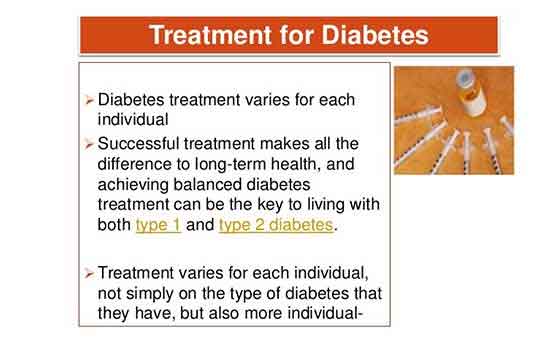
There is no such treatment for various types of diabetes to cure it totally and there is no such vaccination of diabetes for the children. This thing makes this disease more dangerous and serious. Some other treatment of Type 1 Diabetes such as taking insulin (injections), keep count of carbohydrate, fat, and protein, keep checking you diabetes levels, including healthier food options in food, exercises, and yoga. Also, cutting sugar from your diet will also help.
Insulin and different medications: There are different types of insulin that are Short-acting (daily) insulin, rapid-acting insulin, long-acting insulin, and intermediate-acting or NPH insulin. The artificial pancreas was also approved by the Food and Drug Administration in September 2016. It is also known as closed-loop insulin delivery, and it produces the exact amount of insulin.
Other medications generally prescribed by doctors such as Angiotensin-altering enzyme (ACE) inhibitor or Angiotensin II receptor blockers or ARB’s. These two keep the kidney healthy. Aspirin, cholesterol-decreasing drugs, Pramlintide or Symlin, etc.
Type 2 Diabetes:
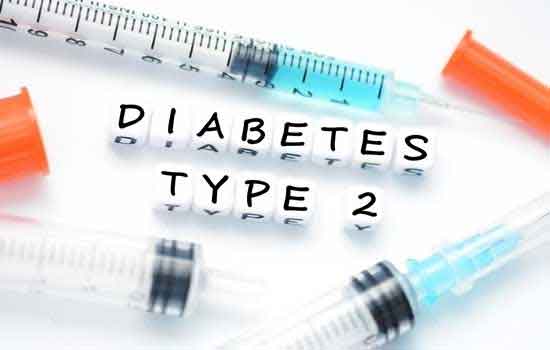
It is a more common type of diabetes, and in this condition, a person doesn’t have to depend on insulin completely. They are usually called insulin resistance. In this, a person’s body produces insulin but not in enough amount. The usual symptoms of type 2 diabetes, such as increased thirst, increase the amount of urinated, cranky nature, blurry vision, numbness in hands and feet, the wounds don’t heal, and least infection comes back again.
The cause of this type 2 diabetes is when a person’s pancreas doesn’t produce enough amount of insulin. Another reason might be that the cells don’t use insulin well. The general reasons behind the cause of this disease are genetic, excessive weight, too much glucose intake. Metabolic syndrome, and broken beta cells, and bad communication among cells also cause Type 2 diabetes.
Usually, Type 2 diabetes occurs at the age of 40 or older age. If you have a family history like if your parent or sibling has diabetes and ethnicity of the person. Usually, it also occurs if a person has prediabetes, heart, and blood vessel diseases, obesity, Polycystic ovary syndrome (PCOS), depression, smoking, stress, etc. These are also common causes of Type 2 diabetes. If a pregnant woman is suffering from gestational diabetes, then afterward, it causes Type 2 diabetes. The general treatments of Type 2 diabetes are medication, exercises, a healthy diabetic diet and keep checking your diabetes.



